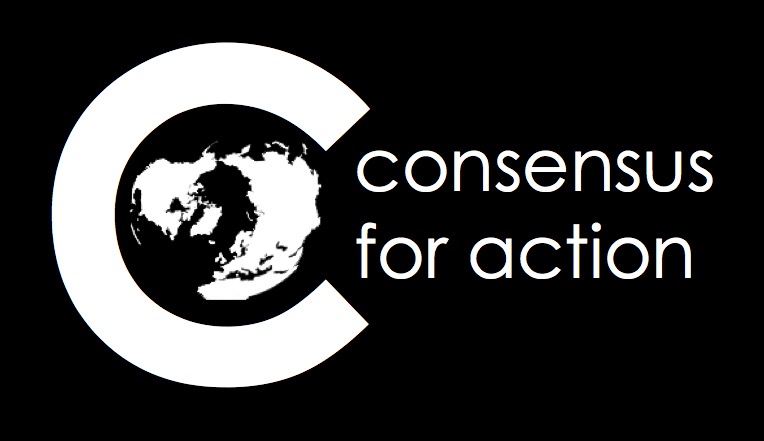Anthony Barnosky is a Professor in the Department of Integative Biology, Curator in the Museum of Paleontology, and Research Paleoecologist in the Museum of Vertebrate Zoology at the University of California, Berkeley.

His new book Dodging Extinction: Power, Food, Money, and the Future of Life on Earth (University of California Press, Fall 2014) explores in more detail the issues covered in this series of blogs, as well as other ways people can prevent the Sixth Mass Extinction.
First, a little background on these Musings on the Wild blogs. This summer I spent a couple of weeks as an ecotourist, traveling in Africa with a Stanford University Alumni Association trip. My wife, Liz Hadly, was the faculty leader, so even though I’m from UC Berkeley, they let me tag along.
The experience reinforced for me why it's so important to keep species like elephants, lions, and rhinos on Earth, and made me think long and hard about the difference between keeping species alive, and keeping wild places alive. The places we visited made it clear that it's certainly possible to do one without the other, but by the end of the trip, I was more convinced than ever that we need to do both.
In today's landscape of human domination though, what we're willing to accept as wild is up for grabs. What should we settle for? That question filled my thoughts for much of the two-week journey. This blog is the first in a series of six that tracks how my personal answer evolved as we travelled from Johannesburg, to Sabi Sabi Game Reserve in South Africa, to Victoria Falls in Zambia, to the Okavango Delta in Botswana.
Part 1. Fencing the Wild
When I was born there were over a million elephants roaming free in Africa. When my parents were born, there were more than that, and a million or so rhinos as well. In my all-too-short lifetime I've seen those elephant numbers more than cut in half. And rhinos, well, now there are maybe twenty thousand of those left, most of them in a single country, South Africa, and all of them in protected game reserves of one kind or another.
It's those kinds of stark facts that make me think that maybe what people tell me over and over is right. Maybe there is no more wild. But I still search for it.
That's what I'm doing this week, a couple of short hops in Africa, visiting some of those last wild places. First stop is Sabi Sabi Game Preserve, right on the border of Kruger National Park.
We left Johannesburg yesterday on a small turbo-prop, which flew high enough to give the umbrella view of this African landscape but not so high that you couldn't get a good sense of what was going on below. As we flew east and a little north, the high-rises, the electric-fenced middle-class neighborhoods, the gold-mine tailings, and the slums of old Soweto quickly gave way to another kind of landscape that also was totally made by humans.
Hundreds and hundreds of miles, as far as the eye could see, of parched brown farmlands. Admittedly, it’s winter here, maybe they look a lot more productive in the wet season. But I'm suspicious. It doesn't do much for my peace of mind about remaining wilderness. After all, nearly forty percent of Earth's lands now look like some version of this.

Another half hour or so of air time, and the farm country finally gives way to a cluster of coal-fired power plants, and I'm not sure if those are nuclear-plant stacks I see down there too. This time of year there is lots of burning of last year's vegetation, adding to the brown haze that stretches off to the horizon.
Now it's wilder looking land below, at least some geologic swirls breaking up the plain, and lots of green. Finally bushes, trees, grasses become more common than tilled fields. But still, the network of dusty brown roads is dense.
We're following a river now, with about twenty minutes to go--we've been in the air about an hour and a half. As the plane banks, dropping down as we near the Sabi Sabi landing strip, I notice a few giraffes loping along below. Stretched out on the river bank I make out a couple of hippos, with a few more mostly submerged in the green water.
Then we touch down, and climb into the land rovers. As we bounce towards the camp, our guide points out a few impala grazing on a burned field. "We burn that periodically, it makes the new grass come up, and the animals come in to eat the new shoots." Camp is not really the right word--it's much more elegant than that, complete with a spa. As we sip a mimosa on the deck, four elephants amble over to the water hole below. One of them is a baby, maybe six months or so old, and we watch it nurse, after its mother playfully blows some water out of her trunk.
 Later on during our evening safari, we
drive through some mowed fields. And we
notice the electric fences that separate the game reserve from the domestic
cattle in the nearby settlements. We
hear the cattle lowing, but don't see them.
Later on during our evening safari, we
drive through some mowed fields. And we
notice the electric fences that separate the game reserve from the domestic
cattle in the nearby settlements. We
hear the cattle lowing, but don't see them.
This is not my idea of wild, I'm thinking.
Yet, I'm thrilled. As the sun is going down, we're cruising in the land rover, and come up on a rhino. I'm seeing, up close and personal, something so rare my kids' kids may never see it--I'm staring at one of the last survivors of a species that's had ninety-eight percent of its kind wiped out.
 And it's staring right back at me. There's no doubt what that animal could do to
if we made a wrong move. It weighs
almost as much as our vehicle, and would have no hesitation in challenging us
if we gave it reason. That doesn't
happen of course. Our guide speaks
rhino, if you will, and can see it's a young male. He points out that the way it sniffs at the
midden of rhino dung, but doesn't make a deposit there, means that the rhino is
not about to let the dominant male in the area (whose midden it actually is)
think that he is making a play for the territory.
And it's staring right back at me. There's no doubt what that animal could do to
if we made a wrong move. It weighs
almost as much as our vehicle, and would have no hesitation in challenging us
if we gave it reason. That doesn't
happen of course. Our guide speaks
rhino, if you will, and can see it's a young male. He points out that the way it sniffs at the
midden of rhino dung, but doesn't make a deposit there, means that the rhino is
not about to let the dominant male in the area (whose midden it actually is)
think that he is making a play for the territory.
That rhino knows his place in nature. He may or may not know that probably the only reason he still has a place in nature is because he is being watched fairly closely, day and night, by some guy out there in camo who's on the lookout for poachers that would dearly love to put a bullet through the rhino’s brain and cut off his horn, for sale on the blackest of black markets.
We get up before dawn the next day, once again pile into the land rovers, and see two more rhinos, then a pride of lions sleeping in the sun. Three males, three females, a newly formed pride we're told, which coalesced after the males killed the cubs of the females a few months earlier. They're pretty skinny, not because there's not a lot to hunt, but because they've been too busy thinking about establishing their new social relationships to do as much hunting as they normally would. As we drive back to the camp, I'm struck again by the high electric fences.
After breakfast, we go for a short hike with our guide. Before we leave, he chambers four rounds into his .458-caliber rifle. Stay behind me, single file, he says. The signals are, one hand up, arm bent at the elbow, means stop. Same arm position, fist clenched, means bunch together. And whatever you do, don't run.
Lots of birds--horn bills, woodpeckers, hoopoes, orioles. The hot sun, the dry grass smells. Elephant tracks, elephant dung, it's winter dung because there are no dung beetles in it. Rhino, hippo, and hyaena tracks too. And leopard tracks, maybe the same one that caused the bush bucks in camp last night to let out an alarm call. We're getting a lesson in how the twigs of a certain tree can actually be used as a toothbrush, when one of us sees the elephant. It’s a gigantic animal, much bigger than they seem when viewed from the safety of a land rover. Its huge ears are flapping. How something so enormous can get so close without hearing it is a mystery, but there it is, and now we hear it, all right. It's crunching and breaking down trees, sounding like rifle reports as they snap. And it smells. Not bad, but I wouldn't say good either, very strong, a pungent odor something between leather, sweat, and marijuana smoke.

Now our guide takes the safety off his rifle and makes sure a round is ready to fire. Back up, slowly, don't run, and stay behind me. He whistles, shouts, tells the elephant we're there. What he tells us is that this elephant is very, very dangerous. He's a young male, in musth. As in, must have sex. When he smells like that, our guide tells us, even the females run away from him. So he gets more and more frustrated, and more and more angry, and he's ready to lash out at anything that gets in his way.
We walk, we don't run, and the elephant backs off. Afterwards we reflect on the very real danger that was there, and feel lucky to have experienced it.
We get back to camp, and wait for our guide to unhook the electric fence that separates our bungalows from where we saw the elephant. As I'm sitting here writing this, monkeys are dropping twigs around me as they jump around in the branches above my head.
And I'm still not sure. Is this wild, or is it not? Can you really have wild with a fence around it?

